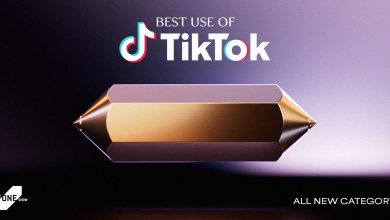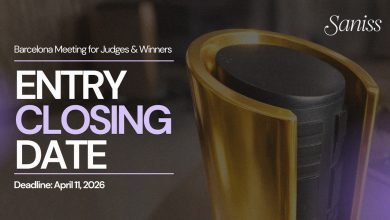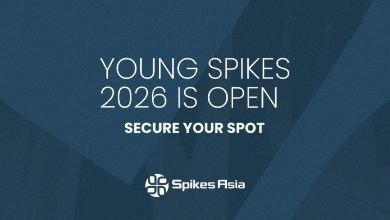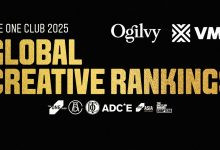HO CHI MINH, VIETNAM — Happiness Saigon has today made history as they become Vietnam’s first ever GRAND PRIX winners at the AD STARS award festival. The accolade, from the festival best known as ‘the World Advertising Olympics,’ was for the Lay’s Crispy Subtitles campaign which used AI to recognise the sounds of crisp eating when watching YouTube films and added language appropriate subtitles automatically.
Vietnam has seen spectacular success against major agencies from across the globe. The GRAND PRIX is the absolute highest honour one can achieve for a campaign, with only one being awarded per category out of almost 20,000 entries.
In total at the festival, Happiness Saigon set records for Vietnam, taking home 7 medals, from 10 shortlists. 1 Grand Prix, 2 Silver stars, 1 Bronze star, and 1 Crystal star for Lay’s Crispy Subtitles – as well as 2 Crystal Stars for the beautiful MotoThung PSA campaign for UNICEF.
CREATIVE TECHNOLOGY AND IMPRESSIVE MARKETING THAT UNLOCKS REAL RESULTS
According to the criteria of AD STARS, the Radio/Audio category winner must deliver outstanding ideas and convey the brand’s message in a superior way by sound design, sound innovation or novel storytelling with sound.
Lay’s Crispy Subtitles was awarded based on the impressive performance which includes:
- The idea has garnered global attention for Vietnam, with downloads in 80 countries, especially generating over $9,000,000 in earned media for Lay’s Vietnam.
- With over 1.2 billion impressions, Lay’s Crispy Subtitles campaign was shared around the world, becoming a top trending topic on Google and Social Media. International news outlets covered the campaign on over 200 global publications, with major publications like Gizmodo, Yahoo News, and VirginRadio!
Alan Cerruti – CEO of Happiness Saigon said: “I’m so proud of Happiness, the team and Lay’s Crispy Subtitle’s achievement. This is not only the pride of Happiness Saigon in particular but also our contribution to the future of advertising in Vietnam. We have a belief that Vietnam will become the “creative hub” of Asia in the next 3-5 years. I am very happy that Happiness Saigon is a home of East-West creatives and talents. We appreciate cultural diversity and unique ideas. It could come from anyone in this agency.”
Happiness Saigon also believes that it shifts the industry and new innovations in technology in Vietnam and gradually makes Vietnam a bright spot in AI not only in the region but also around the world, in the spirit that the Government has approved and issued in July this year on the National Strategy on Research, Development, and Application of Artificial Intelligence (AI) from now until the end of 2030.
WHERE IS THE IDEA OF LAY’S CRISPY SUBTITLES FROM?
All of us have experienced munching on potato chips with the overwhelming “crunching” sound while trying to watch videos with. At the same time, touching the laptop’s volume buttons with greasy fingers is even more annoying.
Capturing that insight, Happiness Saigon and BLISS teamed up to create Lay’s Crispy Subtitles through the use of machine learning algorithms that run directly on the Chrome browser plugin. This is a support for YouTube, the app will automatically activate subtitles when it detects you’re crunching on potato chips.
This ‘crisp-activated subtitle technology’ was achieved by feeding an AI with 178 hours of audio recordings of people eating chips.
To teach crunchy sounds to machine learning, a collection of 17,512 different “crunchy” sound samples were tested. This also means that a lot of Potato Snacks have been “wasted” in the plugin development process.
CAMPAIGN CREDITS:
CLIENT: PepsiCo / Lay’s
Marketing Head: Vu Thi Ngoc Que
Marketing Manager: Yen Le
AGENCY: Happiness Saigon
Executive Creative Management: Alan Cerutti
Chief Creative Officer: Geoffrey Hantson
Executive Creative Director: Gregory Titeca, Marc Richard
Concept Providers: Mathias Lemielle, Thomas Cappelle
Creatives: Mathias Lemielle, Thomas Cappelle, Nick Stillittano
Copy: Loan Anh Huynh, Nghia Tran, Dee Verwaetermeulen
Design: Dries Lauwers, Aldjia Bessalah
Art & Motion: Truc Mai Hoang Anh, Thuy Pham Vuong Bao
Motion & Editing: Trung Thai Thanh, Remke Faber, Seth Michielsen
Head of Performance: Nhat Qui
Performance & Data Planner: Tien Phan Cam
Strategic Planner: Linh Nguyễn
Account: Son Nguyễn, Ngọc Le, An Nguyễn, Giang Ngo
Producer: Bart Vande Maele
Platform Analyst: Loc Nguyen
Community Outreach: Hieu Phan Duc
Production Agency: Bliss Innovative Maker Studio
Head of Technology: Thomas Colliers
Digital PM: Joni Allaert








